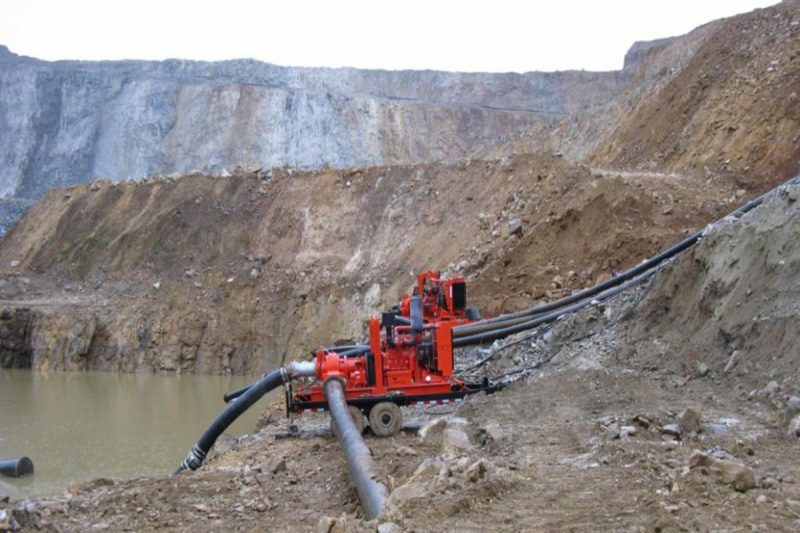During construction sometimes, water logging is encountered, due to the high water table on the site. The water obstructs the construction work, as a foundation can fail in such conditions. Hence, dewatering of the construction site is required. Dewatering is the removal of excess water from the site or pit. There are various methods for dewatering such as well point dewatering, educator dewatering method, deep well dewatering, etc.
One of the major equipment for dewatering is a pump. The pumps are used to suck up the water from the site and transfer it to other location. The selection of pump is an important aspect of dewatering job. The dewatering contractor must select the proper pumps, which are capable of pumping the water; otherwise, the cost of dewatering will increase. Here we have given brief information regarding the selection for pumps for dewatering, which a site engineer must know.

For selecting the right pumps for dewatering, certain criteria must be considered. If suitable pumps are selected, then the dewatering task becomes much easier and the cost of dewatering also reduces, and work will progress fast.
Criteria to Select Pumps for Dewatering
01. Pump Size
The pump size must be selected depending upon the amount of water to be removed. Construction site pumps can run from 1-2kW up to over 10kW. If water extraction is expected to continue for an extended period over a wide surface area, it is recommended to rent multiple pumps for distributed removal of water from the site.
02. Discharge Head
Discharge head is the depth the pump must go in the ground, to lift the water to the other site. According to the depth, the pump size must be selected. If for different well points, the discharge head is different than accordingly the pump must be selected rather than installing pumps with same discharge head capacity. If discharge head is more than 5 m, then submersible pumps are used.
03. Flow Rate
You always want to install a pump that will flush the site of water at the right flow volume in the desired time. In the required time, a pumping rate of 20 litres per second is an adequate rate on a small site. During heavier extraction, one may select a pump that enables 64liters or higher litres per second. It all depends on size of a project, the size of excavation and quantity of groundwater.
04. Location Flexibility
When flood areas are located at various site points, having the ability to move a pump to different spots is critical for fast removal. Gas-powered units provide the greatest flexibility. However, electric water pumps with extended cord lengths can be effective as well.
05. Availability of Electricity
If electricity is easily available on the site, then electric pumps must be employed while considering the cord length required. If electricity is not available, then diesel driven pumps may be employed for dewatering.

06. Waste/Sludge Removal
In some cases, sludge, construction materials, silty water or muddy water and other components may also have to be extracted along with the water. Contractors have options to handle any composition:
- Drainage pumps – for pumping water with less abrasive solids
- Sludge pumps – for non-abrasive sediment and sludge removal
- Slurry pumps – for removing water with abrasive suspended solids like sand, gravel or concrete.
The aforementioned criteria must be kept in mind while selecting the pump for dewatering. The right pump with the suitable dewatering method will make the dewatering task efficient and easy.

